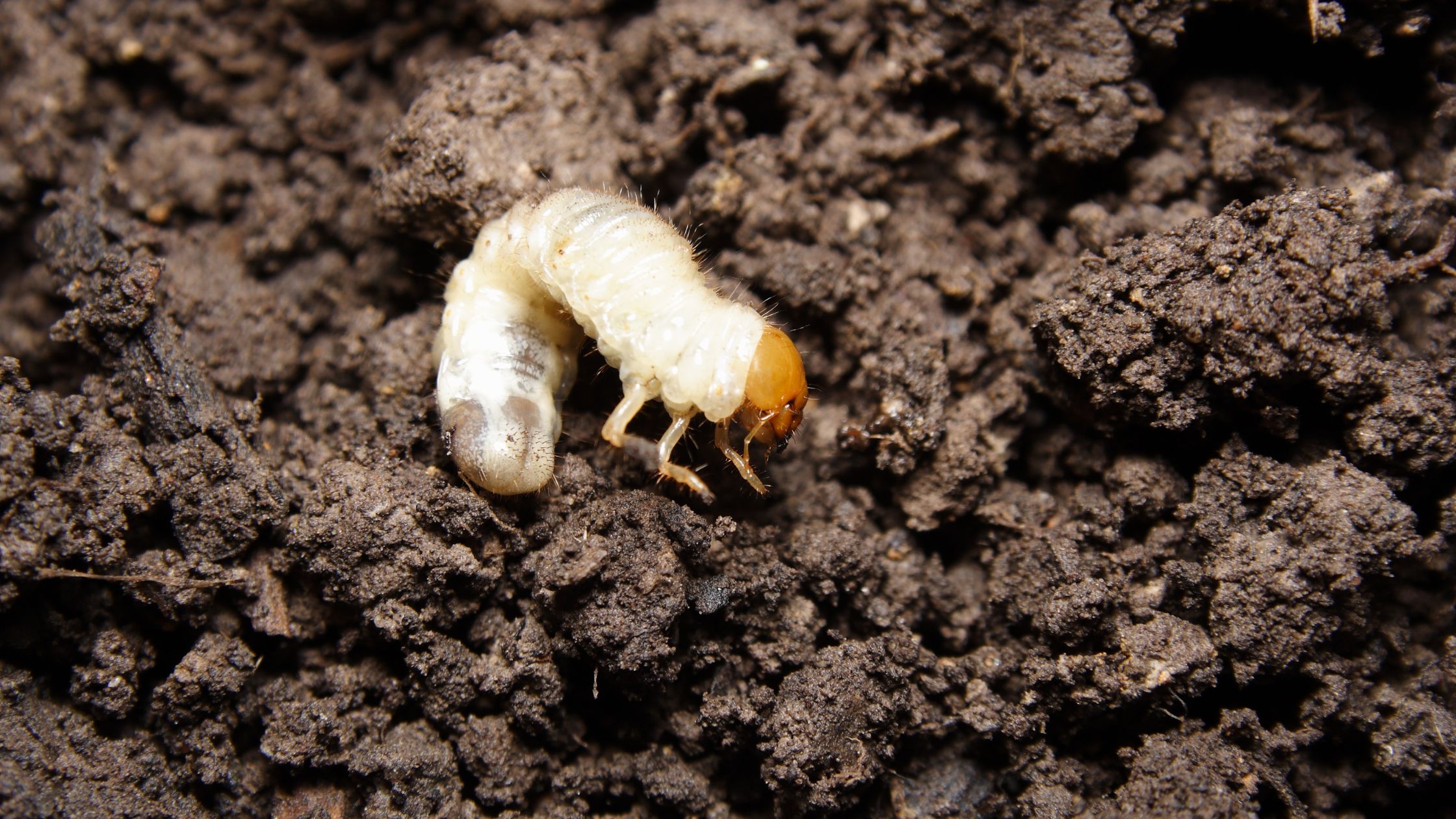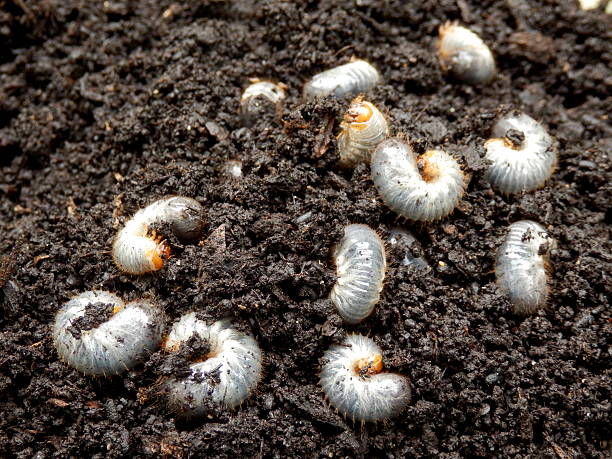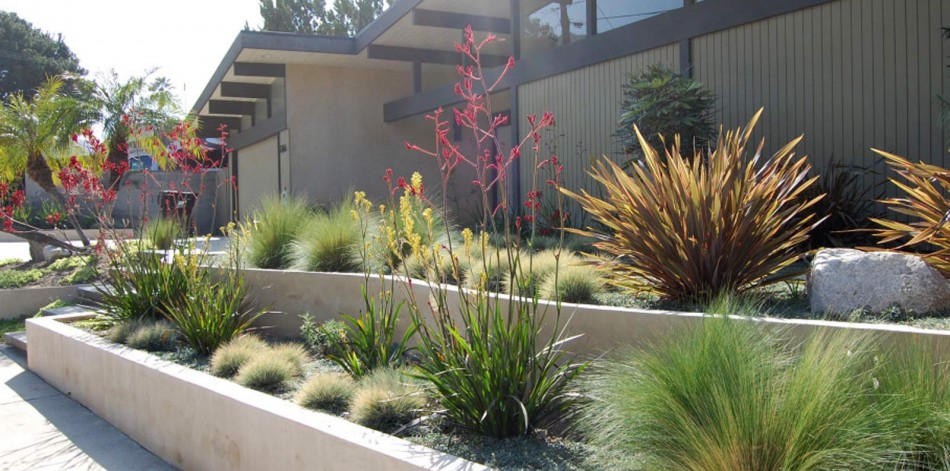Understanding Grub Damage in Your Lawn
Grub damage in lawns is a common issue faced by many homeowners, yet understanding the extent and nature of this damage is crucial for effective treatment and prevention. Grubs, the larval stage of various beetles, feed on the roots of grass, leading to weakened, yellow, and eventually dead patches in the lawn. This damage not only affects the aesthetic appeal of your outdoor space but can also compromise the health and resilience of your lawn over time.
One of the first steps in tackling grub damage is recognizing the problem early. Grubs typically feast on your lawn’s roots during late summer and early fall, which means the visible signs of damage might not appear until it’s too late for some preventive measures. However, understanding the patterns and lifecycle of grubs can empower homeowners to take proactive steps in monitoring and addressing this issue before it escalates.
Moreover, the impact of grub damage extends beyond the surface. As the root system of the grass is compromised, the lawn becomes more susceptible to other stresses such as drought and disease. This can lead to a vicious cycle where the weakened lawn becomes an even more inviting environment for future grub infestations. Therefore, understanding grub damage is not just about identifying and treating current issues but also about implementing strategies to strengthen your lawn’s defenses against future attacks.
By gaining a comprehensive understanding of grub damage, homeowners can better assess the health of their lawns, identify early signs of infestation, and choose the most effective treatment options. This knowledge is the foundation for maintaining a lush, healthy lawn that can withstand the challenges posed by grubs and other pests.
Identifying the Signs of Grub Infestation
Identifying the signs of grub infestation is crucial in taking timely action to protect your lawn. Grubs, the larvae of various beetles, feed on the roots of grass, causing significant damage if left unchecked. The first sign of grub damage often appears as irregular, brown patches in your lawn that do not improve with watering. These patches may feel spongy underfoot due to the weakened root system. Another telltale sign is increased activity of birds, raccoons, or skunks digging up the lawn to feed on the grubs, which can exacerbate the damage.
To confirm a grub infestation, you can perform a simple test by cutting a square foot section of turf about 2-3 inches deep and peeling it back. If you find more than five grubs within this small area, it’s likely you have an infestation that requires attention. Additionally, pay attention to the appearance of the grubs themselves; they are typically white or cream-colored with a C-shaped body. Observing the health of your lawn during late summer and early fall is particularly important, as this is when grub damage is most apparent.
Understanding these signs and regularly monitoring your lawn can help you catch a grub infestation early. Early detection is key to preventing severe damage and ensuring the health and beauty of your lawn. By being vigilant and knowing what to look for, you can take proactive steps in managing grub populations and safeguarding your outdoor space.

The Life Cycle of Lawn Grubs: Knowing Your Enemy
Understanding the life cycle of lawn grubs is crucial in effectively managing and preventing their damage. Lawn grubs, often referred to as white grubs, are the larval stage of various beetles, including the Japanese beetle, the European chafer, and the June beetle. Their life cycle comprises several stages: egg, larva, pupa, and adult beetle, each playing a significant role in the health of your lawn.
The cycle begins when adult beetles lay eggs in the soil during the summer. These eggs hatch into larvae, the stage known as grubs, which feed on the roots of grass. This feeding causes the most visible damage to lawns, typically from late summer through early fall. As temperatures drop, grubs dig deeper into the soil to overwinter. Come spring, they move closer to the surface to feed again before pupating into adult beetles, and the cycle repeats.
Knowing when grubs are most active and understanding their lifecycle can guide the timing of treatments for maximum effectiveness. For instance, applying treatments in late summer or early fall can target grubs when they are young and most vulnerable. Conversely, spring treatments may not be as effective since grubs are larger, less susceptible to pesticides, and soon to pupate into adult beetles.
Recognizing the life cycle of lawn grubs is the first step in a comprehensive grub management strategy. By targeting the grubs at the most opportune times, you can significantly reduce their population and the damage they cause to your lawn. This knowledge, combined with cultural practices and the use of natural predators, forms a robust defense against these common lawn pests.
Natural Predators: Allies in the Fight Against Grubs
When battling grub infestations in your lawn, it’s essential to recognize the role of natural predators as invaluable allies. These predators can significantly reduce grub populations without the need for chemical interventions, aligning with eco-friendly lawn care practices. Among the most effective natural predators are birds, beneficial nematodes, and certain insect species.
Birds, such as robins and starlings, are natural foragers that feed on grubs. Encouraging these birds to visit your lawn can help control grub populations. Installing bird feeders or bird baths can attract these feathered friends to your yard, turning it into a less hospitable environment for grubs.
Beneficial nematodes are microscopic worms that prey on grubs. They can be applied to the lawn where they penetrate grubs, releasing bacteria that is lethal to these pests. This method is highly effective and safe for the environment, pets, and humans. It’s important to choose the right species of nematodes for grub control, such as Heterorhabditis bacteriophora or Steinernema feltiae, and apply them according to the manufacturer’s instructions for the best results.
Certain insect species, like ground beetles and ants, also feed on grubs. Maintaining a biodiverse garden can encourage these beneficial insects, which contribute to natural grub control. Avoiding broad-spectrum insecticides that harm these beneficial insects is crucial for this approach to be effective.
By leveraging the power of natural predators, you can manage grub populations in your lawn more sustainably. This approach not only helps in controlling grubs but also promotes a healthier, more balanced ecosystem in your garden.

Cultural Practices to Prevent Grub Damage
Preventing grub damage to your lawn involves more than just applying treatments; it requires adopting certain cultural practices that create an unfavorable environment for grubs to thrive. One of the most effective strategies is maintaining a healthy lawn through proper mowing, watering, and fertilization. Keeping your grass at an optimal height can discourage female beetles from laying eggs in your lawn, as they prefer shorter grass for this purpose. It’s recommended to mow your lawn to a height of about 3 to 3.5 inches.
Watering your lawn deeply but infrequently can also help prevent grub infestations. Grubs prefer moist conditions, so allowing the top layer of soil to dry out between waterings can make your lawn less attractive to them. However, be careful not to stress your lawn with too little water, as this can make it more susceptible to damage.
Another cultural practice to consider is aeration. Aerating your lawn helps improve soil structure and drainage, making it less hospitable to grubs. It also encourages deeper root growth, which can help your grass recover more quickly from grub damage. Aeration is best performed in the fall or spring when grubs are less active.
Finally, consider introducing or encouraging natural predators into your lawn. Birds, nematodes, and certain types of beetles feed on grubs and can help keep their population in check. Maintaining a biodiverse garden with plants that attract these predators can be an effective way to control grubs naturally.
By implementing these cultural practices, you can significantly reduce the risk of grub damage to your lawn. A healthy, well-maintained lawn is your best defense against grubs and other lawn pests.
Choosing the Right Grub Control Products
When it comes to battling grub infestations in your lawn, selecting the appropriate grub control products is crucial. The market offers a variety of solutions, ranging from chemical pesticides to organic alternatives, each designed to target grubs at different stages of their life cycle. Understanding the specifics of these products and how they align with your lawn care goals is essential for effective grub management.
Chemical treatments, such as those containing imidacloprid or chlorantraniliprole, are highly effective in eliminating grubs. These substances work by disrupting the grubs’ nervous system, leading to their demise. While chemical options can offer quick results, it’s important to consider their environmental impact and potential harm to beneficial insects and animals.
On the other hand, organic options, like nematodes and milky spore disease, provide a more environmentally friendly approach to grub control. Nematodes are microscopic worms that naturally prey on grubs, while milky spore disease is a bacterial condition that specifically targets Japanese beetle grubs. These organic methods may take longer to show results but are safer for the surrounding ecosystem.
When choosing grub control products, it’s also vital to consider the timing of application. Products are most effective when applied at specific times in the grub’s life cycle, typically in late summer or early fall. This timing ensures that the grubs are actively feeding and more susceptible to the treatment.
Lastly, always follow the manufacturer’s instructions carefully when applying any grub control product. Proper application not only ensures the effectiveness of the treatment but also minimizes risks to your lawn and the environment. By choosing the right grub control products and applying them correctly, you can protect your lawn from grub damage and maintain its health and beauty.

Step-by-Step Guide to Applying Grub Treatments
Applying grub treatments effectively requires a strategic approach to ensure the health of your lawn is restored and future infestations are prevented. Here’s a comprehensive step-by-step guide to help you tackle grub damage with confidence.
Step 1: Identify the Best Time for Treatment
Timing is crucial when dealing with lawn grubs. The best time to apply treatments is late summer to early fall when grubs are young and more susceptible to control methods. Applying treatments during this time maximizes their effectiveness and prevents the grubs from causing significant damage to your lawn.
Step 2: Choose the Right Product
Select a grub control product that suits your lawn’s specific needs. There are various options available, including chemical pesticides and natural alternatives. Consider the extent of the infestation, your lawn’s condition, and your personal preferences when making your choice. Always read and follow the product’s instructions carefully.
Step 3: Prepare Your Lawn
Before applying any treatment, mow your lawn to a shorter height. This helps the product penetrate the soil more effectively, reaching the grubs where they live. Water your lawn lightly to moisten the soil, which also aids in the product’s absorption.
Step 4: Apply the Treatment
Using a spreader or sprayer, apply the grub control product evenly across your lawn, paying special attention to areas where grub damage is most evident. Follow the application rates specified on the product label to avoid harming your lawn.
Step 5: Water Your Lawn
After applying the treatment, water your lawn thoroughly. This helps the product move into the soil and reach the grub larvae. A deep watering ensures the treatment is effective and minimizes the risk of burning your grass.
Step 6: Monitor and Repeat if Necessary
Keep an eye on your lawn’s condition in the weeks following the treatment. If signs of grub damage persist, a second application may be necessary. Always wait the recommended amount of time between treatments to avoid damaging your lawn.
By following these steps, you can effectively apply grub treatments to your lawn, restoring its health and beauty while preventing future grub infestations.
Repairing the Damage: Lawn Restoration Techniques
Once you’ve addressed the grub infestation in your lawn, the next step is to repair the damage and restore your lawn to its former glory. The extent of the damage will dictate the restoration approach. For minor damage, overseeding might suffice, but severely damaged lawns may require more intensive efforts like sodding or reseeding.
Start by assessing the damaged areas. Lightly rake these spots to remove dead grass and create a good seedbed for new seeds. If the soil is compacted, consider aerating your lawn to improve water and nutrient penetration, which is crucial for seed germination and root growth.
Choose a high-quality grass seed that matches your existing lawn type. Applying a starter fertilizer can provide essential nutrients that support new growth. Spread the seeds evenly over the damaged areas, and lightly cover them with soil to protect them from birds and ensure good seed-to-soil contact. Keep the area consistently moist by lightly watering several times a day until the seeds germinate and the new grass establishes.
In cases of severe damage, laying new sod might be the best option. This involves preparing the soil as you would for seeding but instead of sowing seeds, you’ll be laying rolls or patches of pre-grown grass. This method provides instant results and can be more effective in restoring a lawn quickly, though it’s more labor-intensive and costly.
Regardless of the method chosen, patience and consistent care are key. Continue to water, mow, and fertilize your lawn according to the needs of the new grass. With time and proper maintenance, your lawn can recover from grub damage and become lush and healthy once again.
Maintaining a Healthy Lawn Post-Repair
After successfully repairing grub damage, maintaining a healthy lawn is crucial to prevent future infestations and ensure your grass remains vibrant and strong. A key aspect of lawn care post-repair involves regular monitoring and maintenance practices that not only enhance the aesthetic appeal of your lawn but also fortify it against pests, including grubs. Here are essential tips to maintain a healthy lawn post-repair:
1. Adequate Watering: Water your lawn deeply but infrequently to encourage deep root growth. This practice helps your grass withstand drought and reduces susceptibility to pests.
2. Proper Mowing: Keep your lawn at an optimal height, which varies depending on the grass type. Mowing too short can stress the grass and make it more prone to infestation. Ensure your mower blades are sharp for clean cuts.
3. Fertilization: Use the right fertilizer for your lawn type and soil condition. A well-fertilized lawn can recover more quickly from damage and is less likely to be overrun by grubs.
4. Aeration: Aerating your lawn helps improve soil structure and nutrient uptake. It allows air, water, and nutrients to penetrate the root zone, creating a stronger and more resilient lawn.
5. Monitoring: Regularly inspect your lawn for signs of grub damage or other pest issues. Early detection is key to preventing widespread damage.
By implementing these lawn care tips, you can maintain a healthy, lush lawn that is less likely to suffer from grub infestations in the future. Remember, a proactive approach to lawn maintenance is the best defense against grubs and other lawn pests.
When to Call in the Professionals: Seeking Expert Help
While many homeowners are successful in managing grub damage through DIY methods, there are instances when calling in the professionals is the best course of action. Knowing when to seek expert help can save you time, money, and further damage to your lawn. If you’ve applied grub control products as directed and still notice signs of grub damage, it might be time to consult a lawn care professional. Experts in lawn care have the knowledge, experience, and tools to diagnose and treat grub infestations more effectively.
Professional lawn care services can offer customized solutions tailored to the specific needs of your lawn. They can conduct a thorough assessment to determine the extent of the damage and the type of grubs causing it. Based on this assessment, they can recommend and apply the most effective treatment options. Moreover, professionals can provide ongoing maintenance and prevention strategies to ensure your lawn remains healthy and grub-free in the long term.
Another reason to consider professional help is when the infestation is extensive. Large-scale infestations can be challenging to manage with over-the-counter products alone. Professionals have access to more potent treatments that are not available to the general public. They also have the expertise to apply these treatments safely, minimizing harm to your lawn, your family, and the environment.
In summary, while many grub control methods can be effectively carried out by homeowners, there are situations where professional intervention is necessary. If you’re struggling with persistent grub damage despite your best efforts, or if you’re dealing with a large-scale infestation, it’s wise to call in the professionals. Their expertise can help restore your lawn to its former glory and prevent future grub problems.
